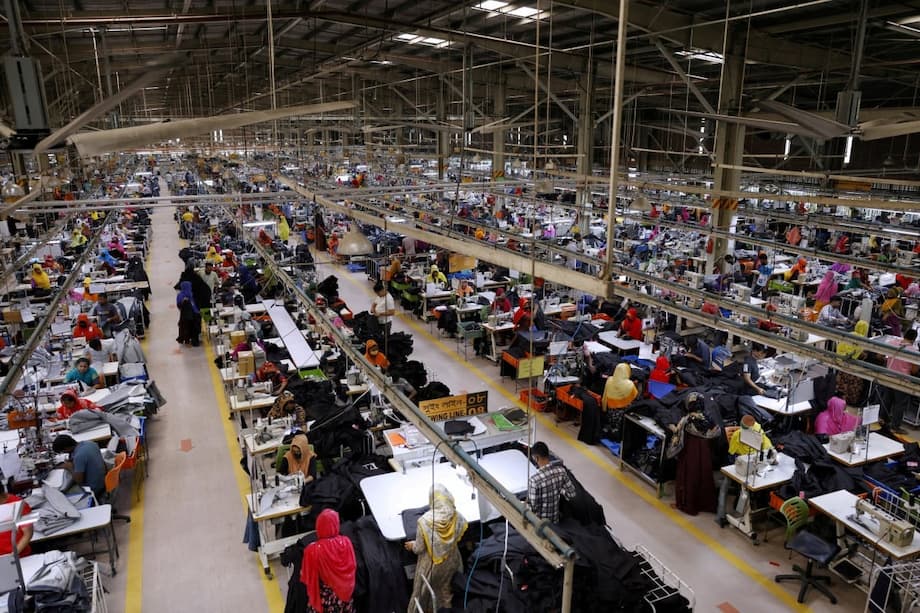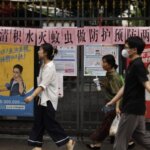Bangladesh’s Garment Industry: Navigating New US Tariffs and Global Competition
Bangladesh’s ready-made garment (RMG) sector, the backbone of its economy and a lifeline for over four million workers, has found itself at the center of a shifting global trade landscape. After months of tense negotiations, the United States reduced its proposed tariff on Bangladeshi garments from a punishing 35% to 20%. While this move was hailed as a diplomatic victory in Dhaka, industry leaders and workers remain wary. The sector faces not only higher operating costs and squeezed profit margins but also stiffer competition from regional rivals such as Vietnam, India, and China, all vying for a share of the lucrative US apparel market.
- Bangladesh’s Garment Industry: Navigating New US Tariffs and Global Competition
- How Did the Tariff Changes Come About?
- The Immediate Impact: Uncertainty and Job Fears
- Regional Competition: Opportunity or Threat?
- Industry Response: Adaptation and Innovation
- Risks and Opportunities: The Road Ahead
- In Summary
How Did the Tariff Changes Come About?
The US, under President Donald Trump, has aggressively reworked its trade relationships, imposing reciprocal tariffs on dozens of countries. Bangladesh, the world’s second-largest garment exporter after China, was initially hit with a 37% tariff in April 2025. This was later reduced to 35%, and after further negotiations, settled at 20%—a rate broadly aligned with those imposed on Sri Lanka, Pakistan, and Vietnam, but still higher than what many in the industry had hoped for.
According to Mahmud Hasan Khan, president of the Bangladesh Garment Manufacturers and Exporters Association (BGMEA), the effective tariff rate (ETR) on Bangladeshi garments now stands at 36.5% when factoring in the pre-existing 16.5% US import duty. This is a significant jump from previous years and has immediate implications for the sector’s competitiveness.
Interim Prime Minister Muhammad Yunus called the outcome a “decisive diplomatic victory,” emphasizing that Bangladesh had avoided the worst-case scenario of a 35% or higher tariff. Khalilur Rahman, the country’s national security adviser, noted that the government had prioritized the apparel industry in negotiations, agreeing to increase imports of US agricultural products and open its market to US goods in exchange for tariff relief.
What Prompted the US Tariff Hikes?
The US administration’s new tariffs are part of a broader strategy to address trade imbalances, encourage economic reforms in partner countries, and respond to geopolitical developments. For instance, India was hit with a 50% tariff after failing to reach a trade agreement and continuing energy imports from Russia. China faces a 30% tariff, with further increases possible. These moves are designed to pressure trading partners while also protecting US industries and jobs.
The Immediate Impact: Uncertainty and Job Fears
The announcement of higher tariffs sent shockwaves through Bangladesh’s garment hubs. Factories in Dhaka and surrounding areas reported a sharp drop in new orders as US buyers adopted a “wait-and-see” approach. According to Reuters, many workers fear layoffs and factory closures. Raimoni Bala, a sewing machine operator in Ashulia, shared her anxiety:
“For the past few months, everyone is talking about cuts. Whenever anyone visits the factory, my chest aches. I feel like they’ve come to tell me I’ve lost my job.”
Such fears are not unfounded. The RMG sector accounts for more than 80% of Bangladesh’s export earnings and roughly 10% of its GDP. During the April–June quarter of 2025, net exports fell by 15%, largely due to tariff uncertainty and disruptions from a strike at the National Board of Revenue (NBR). Total RMG export earnings dropped nearly 12% from the previous quarter, though they remained slightly higher than the same period last year.
Selim Raihan, an economics professor at the University of Dhaka, warned:
“The burden of this tariff hike will fall heavily on garment manufacturers and the millions of workers they employ, a majority of whom are women, raising the risks of slower growth, job losses and a rise in poverty.”
Social Consequences: Women and Girls at Risk
The garment industry has been a powerful engine of social progress in Bangladesh, especially for women. Over 60% of garment workers are female, and the sector has contributed to higher female labor force participation, delayed marriage, and increased educational attainment for girls. Studies show that girls in factory-adjacent communities stay in school longer and marry later, thanks to the economic opportunities provided by the industry.
However, sudden trade shocks—such as the imposition of high tariffs—threaten to reverse these gains. During the COVID-19 pandemic, factory closures led to a surge in child marriage and school dropouts. Experts fear that a prolonged downturn in the garment sector could have similar effects, undermining decades of progress in women’s empowerment and social welfare.
Regional Competition: Opportunity or Threat?
While the new US tariff regime poses challenges, it also presents opportunities. The US has imposed even higher tariffs on Indian (50%) and Chinese (30%) apparel, making Bangladeshi products relatively more attractive to American buyers. Vietnam, Pakistan, and Indonesia face similar or slightly lower tariffs, but Bangladesh’s focus on cotton garments—treated more leniently under US rules—gives it a potential edge.
Industry leaders are cautiously optimistic. Mahmudul Hasan Babu, BGMEA President, noted that if current tariffs on India and China persist, Bangladesh could see a surge in export orders and foreign investment. Mohammad Hatem, President of the Bangladesh Knitwear Manufacturers and Exporters Association, added that the tariffs are creating a supply gap in the US market that Bangladesh and Vietnam are well-positioned to fill.
However, there are significant hurdles. Bangladesh’s backward linkage industries—such as textiles and yarn—are hampered by a persistent gas crisis, limiting production capacity. Port inefficiencies, political instability, and banking sector challenges further constrain the sector’s ability to capitalize on new opportunities.
Comparative Tariff Math: Bangladesh’s Competitive Edge
According to The Daily Star, Bangladesh’s effective tariff rate of 36.5% is lower than India’s 66.5% and China’s 55%. Indonesia fares slightly better at 35.5%. Bangladesh’s advantage is further enhanced if garments contain at least 20% US-origin content, such as American-grown cotton, which can reduce the tariff burden. The country is already increasing imports of US cotton and building new warehouses to facilitate this strategy.
Still, American buyers are pressuring Bangladeshi exporters to absorb some of the tariff costs, squeezing already thin profit margins. The US apparel market itself is shrinking, dropping from $105 billion to $85 billion in 2024, which may limit the potential gains from increased market share.
Industry Response: Adaptation and Innovation
Bangladeshi manufacturers are responding to the new reality in several ways:
- Negotiating with Buyers: Factory owners are resisting demands from US clients to share the tariff burden, warning that further price cuts could make operations unsustainable.
- Market Diversification: There is a renewed push to expand exports beyond the US, targeting Europe, Canada, and emerging markets in Asia and Africa.
- Value Addition: Industry leaders are calling for a shift from basic, low-margin garments to higher-value, complex products such as designer apparel and technical textiles.
- Sustainable Manufacturing: Bangladesh is investing in green factories and ethical production practices to appeal to environmentally conscious buyers and differentiate itself from competitors.
Commerce Adviser Sk Bashir Uddin emphasized that maintaining competitiveness will require not just favorable tariffs but also improvements in energy supply, port operations, and the overall investment climate.
Government Strategy: Diplomacy and Reform
The government is pursuing a multi-pronged strategy to weather the storm:
- Continued Diplomacy: Ongoing negotiations with the US Trade Representative aim to secure further tariff relief and address non-tariff barriers.
- Trade Diversification: Bangladesh has agreed to increase imports of US goods, including agricultural products, and to open its market to US dairy and meat.
- Policy Reforms: Commitments to reduce reliance on Chinese imports, streamline tariffs and taxes, and ratify international agreements are part of the broader trade deal.
- Support for Workers: Emergency measures such as cash transfers and retraining programs are being considered to support displaced workers, especially women.
Risks and Opportunities: The Road Ahead
The new tariff regime is both a challenge and an opportunity for Bangladesh. On the one hand, higher costs and intense competition threaten the viability of many factories, with potential ripple effects on employment, poverty, and social progress. On the other hand, the punitive tariffs on India and China could shift global sourcing patterns in Bangladesh’s favor—if the country can address its internal bottlenecks and seize the moment.
Experts and industry stakeholders agree that the coming months will be critical. Bangladesh must act swiftly to improve product quality, enhance production efficiency, and upskill its workforce. Policy transparency, ease of doing business, reliable energy supply, and expansion of Export Processing Zones are all essential to turning this geopolitical trade shift into a lasting economic advantage.
As Jagonews24 notes, Bangladesh’s leather and IT sectors also stand to benefit from the new US trade policies, provided they can meet international standards and certifications. The country’s young, tech-savvy workforce and strategic location make it an attractive alternative for global production networks.
In Summary
- The US reduced its proposed tariff on Bangladeshi garments from 35% to 20%, but the effective rate remains high at 36.5%.
- Bangladesh’s RMG sector faces immediate challenges: job fears, squeezed margins, and intense competition from regional rivals.
- Higher US tariffs on Indian and Chinese goods create new opportunities for Bangladeshi exporters, but internal bottlenecks must be addressed.
- The sector is a cornerstone of Bangladesh’s economy and social progress, especially for women and girls.
- Industry leaders and the government are pushing for market diversification, value addition, and sustainable manufacturing to maintain competitiveness.
- Swift reforms in energy, infrastructure, and policy are needed to fully capitalize on the shifting global trade landscape.












